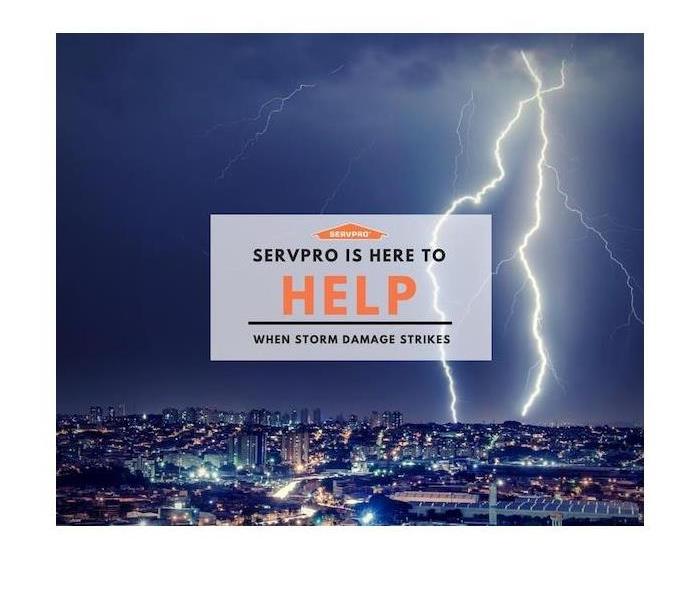We're Here to Help When Storm Damage Strikes
8/6/2022 (Permalink)
Every thunderstorm produces lightning, these storms can also produce powerful winds over 50 mph, hail, flooding and even tornado's. According to the National Weather Service, the Empire State Building is hit by lightning an average of 25 times per year. Lightning is one of the leading causes of injury and death caused by severe weather.
It is very important to take all thunderstorms seriously and always take the proper precautions to protect yourself and your human and canine loved ones.
Know the terms
- Severe thunderstorm watch: Conditions are favorable for the development of severe thunderstorms in and close to the watch area.
- Severe Thunderstorm Warning: Issued when a thunderstorm produces hail 3/4 of an inch or larger in diameter and/or winds which equal or exceed 58 mph.
Stay tuned to updates from the National Weather Service on local stations. At the first sound of thunder, head indoors. No place outdoors is safe when a thunderstorm is nearby. When you're indoors, wait a minimum of 30 mins after you hear the last sound of thunder before going back outside. While indoors, you should avoid using plugged-in electronics and plumbing if possible. Water can conduct electricity, which is why it is dangerous to use plumbing during a thunderstorm. Also, remember to stay away from windows during the storm. If you are unable to get indoors when a storm is approaching, the safest place to be is in a car. Do not lean against concrete walls, or lay down on concrete. Avoid large structures which are considered lightning rods during a thunderstorm. Avoid contact with metal which would include, bicycles and motorcycles. If you driving when a thunderstorm hits, pull over remain in your vehicle until the storm passes.
After the storm is over, avoid areas that are damaged from the storm. Never drive through roadways that are flooded. Stay away from all downed power lines and report them immediately. Doing so will help officials restore power to the area as soon as possible. Stay indoors if the damage is severe and be sure to keep an eye on small children and pets.
Floods and storms don’t wait for normal business hours, and neither do we. You can depend on an immediate response from our highly trained technicians, who are available 24 hours, seven days a week. If you need help with storm cleanup, call us. (917) 924-2260

 24/7 Emergency Service
24/7 Emergency Service